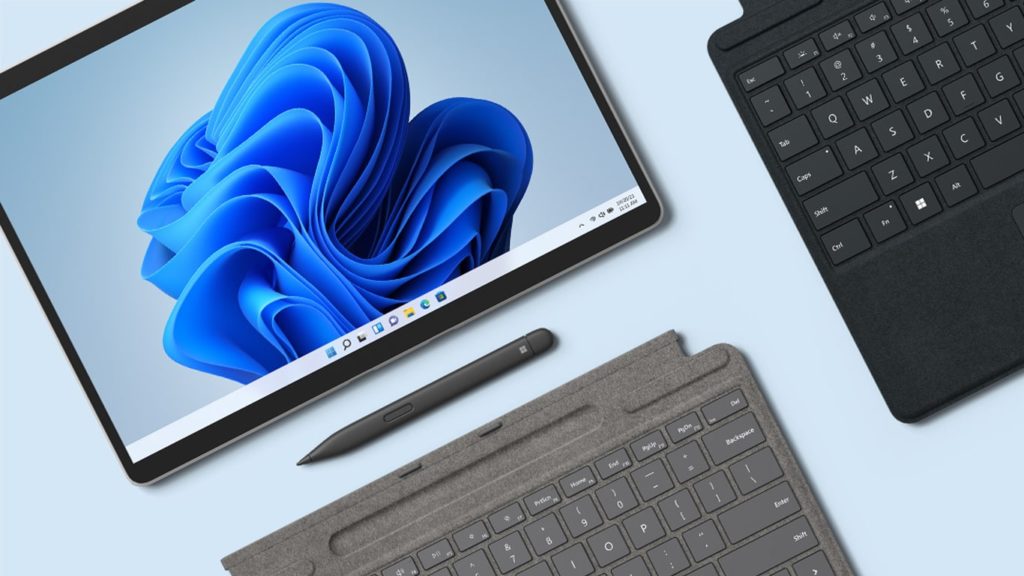
Microsoft Surface is a whole series of tablets, personal computers, and interactive whiteboards. They are all touchscreen-based devices designed and developed by Microsoft. These devices run on the Microsoft Windows operating system except Surface Duo, which operates on Android. More precisely, most Surface devices have Intel processors and utilize Windows 10 or Windows 11 operating systems. Right off the bat, we’ll answer your question, “Does Microsoft Surface support SIM cards?”
Many Surface models are SIM compatible, which means they can either have a nano-SIM card slot or sport an embedded SIM (eSIM). Microsoft developed such 4G and LTE-enabled devices to eliminate the dependency on Wi-Fi networks and sharing a hotspot from other devices. There is a lot more to cover about this lineup, so let’s begin.
Which Microsoft Surface devices support SIM cards?
As mentioned, not all Microsoft Surface devices are SIM compatible. Some are Wi-Fi only, while others permit either inserting a physical SIM card or using an eSIM. An eSIM acts the same as a physical SIM card, but you can’t remove it from the device. It’s soldered to the motherboard and acts as a virtual SIM card, making it more capable than a physical one in many aspects. In total, there are 7 generations of Microsoft Surface devices. Instead of checking individual specs, here’s an assortment of all Microsoft Surface devices that allow the use of SIM cards:
- Surface Duo
- Surface Go 2
- Surface Go 3
- New Surface Pro 7+
- Surface Pro LTE
- Surface Pro X
- Surface Pro 5 LTE Advanced
- Surface Pro 8
Benefits of using a SIM-enabled Surface device
There are several advantages of choosing a Surface device that works with SIM cards. Here’s a list of positives at a glance:
- You can set yourself free from Wi-Fi networks. Use all the cellular services including data access with your Surface device like you do with your smartphone.
- You get internet access on the go without ever turning your phone’s hotspot on. Many service providers set hotspot data limits, which could result in more expenses. Surface devices with LTE eliminate the need for mobile hotspot completely.
- With LTE, your data is more secure. Using public Wi-Fi is not reliable if you deal with confidential data. What will you do if you have no other option but to access a public Wi-Fi network? Microsoft Surface LTE devices offer the option of using cellular data, meaning you don’t need to share a network.
- Employees that use LTE-enabled Surface devices help the business organization. After the pandemic, the concept of “work from anywhere” became popular. Now more and more organizations are opting for remote working. With these devices, your employees can perform set tasks from anywhere and anytime.
- If a remote employee is works on a Surface device with SIM support in a country where the data cost is low, it will result in low expenses to the company. A huge bulk of data available at a cheap price is what every business enterprise dreams for.
- Higher ups can call or text employees or team members regardless of location or time. The other group can do the same with the heads of the organization. This mitigates the communication gap and delayed responses.
Is it worth buying a SIM-compatible Microsoft Surface model?
The Microsoft Surface lineup is both Wi-Fi only and cellular network compatible. Unsurprisingly, cellular network-enabled Surface devices are more expensive than Wi-Fi-only ones. Therefore, there must be a question arising in your mind. Are you wondering if a Surface device capable of connecting to a cellular network is worth buying? We already went over the perks of the SIM-enabled Surface devices in the previous section. If you are buying the Surface device to only use at home or office, then the Wi-Fi-only models would be more feasible. After all, you can have access to a secure Wi-Fi network at all times in those locations.
Do you need to work on the go? In that case, models compatible with the cellular network would be more adequate. Moreover, if the country you live in has cheap cellular data available, the SIM-enabled Surface models would be a good choice, too. Further, if you’re making lots of phone calls and sending SMS from your device, we suggest buying a SIM-enabled Surface model.
You have learned already that some Microsoft Surface models support either a physical SIM card or an embedded one. Other Surface models only support Wi-Fi connectivity. Both models have positive and negative aspects we tried to convey. All in all, we can conclude SIM-enabled models offer more and better features, plus support Wi-Fi networks. If you can afford them, buying these devices lets you get the best of both worlds.